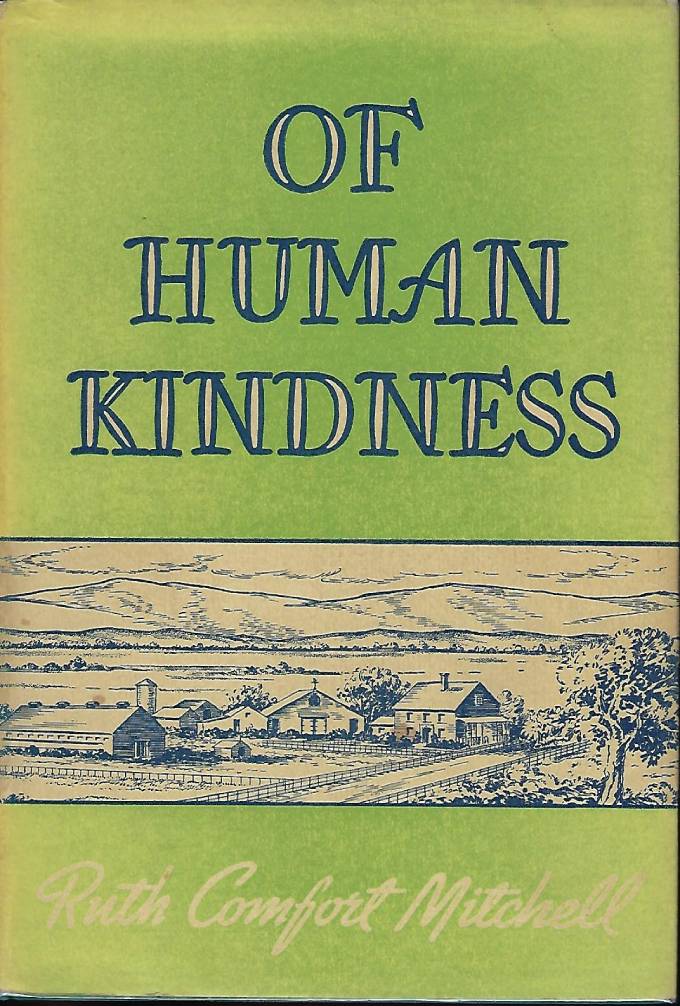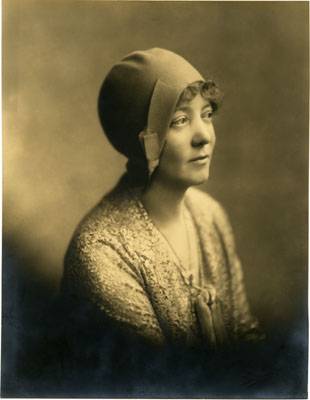The California writer Ruth Comfort Mitchell had no desire for animosity to develop between herself and her Los Gatos neighbor John Steinbeck. To her mind Steinbeck was a “literary lion,” while she called herself a “little Los Gatos wildcat.” But proximity didn’t prevent her from criticizing The Grapes of Wrath when it appeared in 1939, or from responding with a counter-novel of her own the following year. She expressed regret that readers were taking Steinbeck’s migrant story as documented history because she knew better. She felt that Steinbeck’s bleak picture was unfair to Californians, so she did something about it.
Clearly Mitchell was throwing down the gauntlet to Steinbeck when she decided to broaden the conversation by taking an opposing perspective on the problems of the migrants descending on California, and their effect on the state and its citizens. She took it upon herself to get things right in every respect that mattered to her by writing her own book—one that would present an alternate narrative of what happens when political, social, and environmental forces collide. Basing her story on what she had experienced as a native, she titled her counter-novel Of Human Kindness.
Unfortunately, the received wisdom concerning Mitchell that appears in the myriad of books written about Steinbeck is mostly flawed. She is typically described in a few dismissive sentences, or a footnote, as a shallow romantic who was born into wealth—a San Francisco socialite incapable of deep thought or social sympathy. Worst of all, she wrote from a woman’s point of view. She couldn’t possibly have witnessed or understood what the migrants had been through in making the arduous journey from Dust Bowl states like Oklahoma to the Promised Land of California.
“That Ranch Never Provided Me a Set of Shoestrings!”
Born in 1882, Ruth grew up in a modest rented Victorian house on the edge of busy Valencia Street in San Francisco’s Mission District. Her father was a traveling liquor salesman and rarely at home. As an only daughter and older sister to three brothers, she undoubtedly spent a good deal of her time as a teenager helping with domestic duties that included managing mammoth heaps of the family’s laundry two days a week. Though the Mitchells had a “hired girl”—an Irish immigrant whose presence saved them from the shame of having no servants—they were at best middle class. Their neighbors were mostly blue-collar workers plus a few men with white-collar jobs.
Later Ruth’s father, John S. Mitchell, became the manager and then the owner of the Hollenbeck Hotel in Los Angeles. But he had been working since he was 11, and he was 55 when he finally achieved real success. Sanborn Young, the man to whom Ruth was wed on the South Rim of the Grand Canyon when she was 32, escaped to California after a bitter divorce in Illinois. Eventually Young inherited property from his family, and in 1926 he and Ruth bought undeveloped ranch land near Riverdale, in Fresno County. Far from living in the grand manner assumed by her detractors, Ruth was heard to say of this venture, “That ranch in the San Joaquin never provided me with a set of shoestrings!”
Instead, Mitchell (shown in this undated archival photo) made her own success through a prodigious literary output spanning 40 years and including 16 novels, two exemplary poetry collections, a number of hit vaudeville plays and movie scripts, and countless short stories published in leading magazines of the day. When she died unexpectedly in 1954, at the age of 71, she left an estate valued at more than $300,000. Even her critics admitted that she was a decidedly clever woman who tackled subjects like “flapperdom” in a delightful manner, while also writing sensitive poetry denouncing inhumanity and war to devastating effect.
Like her friends Gertrude Atherton and Kathleen Thompson Norris, Ruth Comfort Mitchell attracted an army of readers largely composed of women who loved her because she created female characters they recognized from their own lives. She understood domestic dynamics, and she displayed deep sympathy for the vulnerabilities and challenges faced by women in rural California between the two world wars. Her description of their lives is still interesting to read, and her young heroines—those who could find jobs— struggled to stay afloat in a world that seems incredibly male-centric today. Some of them marry too early and pay the price. Mary Banner, the heroine in Of Human Kindness, is one of these.
Banner is 17 when she marries a rancher named Ed, unaware that she will be living at close quarters with a fierce mother-in-law in a ramshackle house in the unbearably hot San Joaquin Valley. The family’s plight is typical of that of small farmers in the sagging economy of Depression-era California, struggling mightily to survive on an income that usually failed to meet expenses. They made do and did without. Daily life was hard, compounded by problems with pests and weather and cows that had to be milked 365 days a year if they weren’t down with the bloat. Making matters worse, Mary’s daughter elopes with an “Okie-Dokie-Boy” who has been fired by her husband, and her son is led astray by a Communist-inspired school teacher. Ed blames both calamities on Mary and says he regrets that he married her.
“They Reacted Perfectly Normally. They Became Angry.”
Mitchell resented the fact that Steinbeck ignored the travails of small family-farmers like Mary and Ed in his indictment of corporate agriculture in The Grapes of Wrath. Simply put, she knew that he had not told the whole story—and Steinbeck knew it too, as he admitted during a Voice of America radio interview in 1952. When the migrants were dusted out of their farms back east, Steinbeck said, “they met a people who were terrified, for number one, of the depression and were horrified at the idea that great numbers of indigent people were being poured on them, to be taken care of. They could only be taken care of by taxation, taxes were already high, and there wasn’t much money about. They reacted perfectly normally, they became angry.”
Like others at the time, Ruth felt that one of the biggest holes in Steinbeck’s story was its failure to acknowledge the measure of relief that was offered by local authorities to those newly arriving in California. Kern County, the end of the line for many migrants, provided a measure of free health care, supplementing the rations available from the Farm Security Administration. In emergencies, the FSA could also issue money for clothing, gasoline, and medicine. While some migrants refused help from the “damn government,” others gladly accepted what was offered.
At the end of Mitchell’s novel, Mary Banner turns down an opportunity for personal happiness in order to keep her family together. Like Steinbeck’s Ma Joad, who wields a jack handle to prevent the separation of her kinfolk, she sacrifices so that those who survive may endure. Steinbeck’s migrant mother is the heart her family’s story, like the self-sacrificing heroine in Mitchell’s Of Human Kindness. They are equally sympathetic figures, and their similarities, like their differences, are essential to the kind of understanding that Mitchell, like Steinbeck, hoped readers would gain from reading their books.
Anyone with information about Ruth Comfort Mitchell is encouraged to communicate with Peggy Conaway Bergtold at pcon@cruzio.com.




